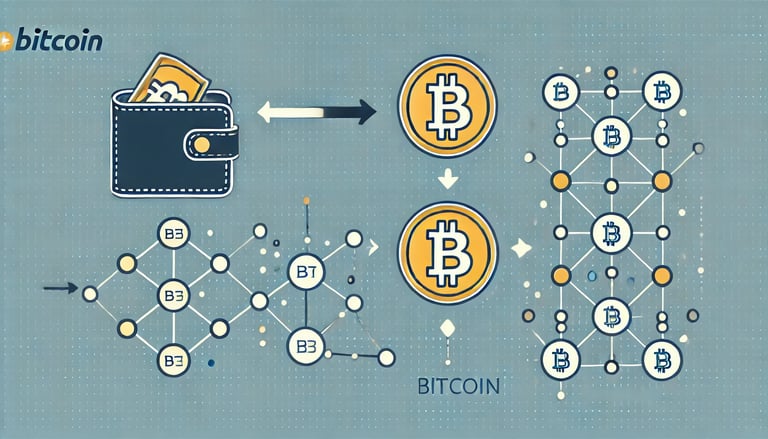Cryptocurrency Transactions
How Cryptocurrency Transactions Are Processed
Transaction Initiation
A user decides to send cryptocurrency (e.g., Bitcoin) to another person.
They enter the recipient’s wallet address and the amount in their crypto wallet app, then sign the transaction with their private key (a secure digital signature unique to the sender).
The transaction is broadcast to the cryptocurrency network.
Transaction Propagation
The transaction is sent to a network of computers called nodes, which validate the transaction.
Nodes check that:
The sender has enough funds in their wallet.
The digital signature is valid.
Once validated, the transaction enters the mempool (a waiting area for unconfirmed transactions).
Mining and Block Creation (For Bitcoin and other Proof-of-Work blockchains)
Miners pick up transactions from the mempool and bundle them into a "block."
To add the block to the blockchain, miners must solve a complex mathematical puzzle (a process called Proof of Work). This requires significant computational power.
The first miner to solve the puzzle gets to add the block to the blockchain and earns a reward (newly minted Bitcoin plus transaction fees).
Block Confirmation
Once the block is added to the blockchain, the transactions in it are confirmed.
Other nodes in the network verify the new block to ensure everything is correct.
Each new block that is added after the first one increases the number of confirmations for the transactions, making them more secure.
Transaction Completion
The recipient's wallet is updated to reflect the incoming funds.
Depending on the blockchain, it may take several confirmations (e.g., 6 confirmations for Bitcoin) before the transaction is considered fully secure.
Key Features of This Process
Decentralization: No central authority is needed to validate or process transactions.
Security: The blockchain is immutable (unchangeable) because altering a confirmed block would require immense computational power.
Transparency: All transactions are recorded on the public ledger, viewable by anyone.




